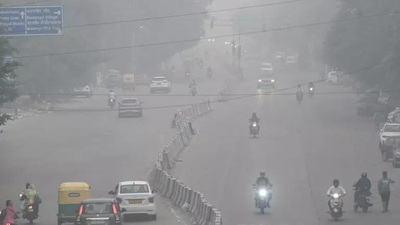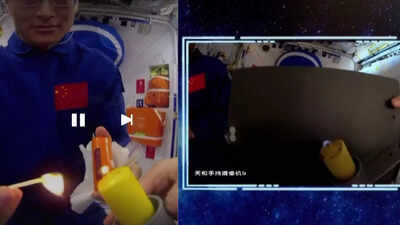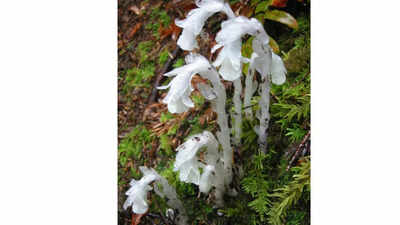Delhi Artificial Rain: What is cloud seeding? How it’s done and the science behind it | Delhi News

NEW DELHI: Delhi may witness its first-ever artificial rainfall on Tuesday as the government prepares for a cloud seeding operation to clear the city’s toxic air. The trial, a joint project with IIT Kanpur, depends on favorable weather conditions in Kanpur, where the aircraft for the operation is currently stationed.The move comes as Delhi’s air quality continues to remain in the ‘very poor’ category, with an Air Quality Index (AQI) of 306 recorded at 8 am on Tuesday. Despite the Graded Response Action Plan (GRAP) being in force after Diwali, pollution levels have shown little improvement.Delhi Environment minister Manjinder Singh Sirsa said, “Regarding cloud seeding, as soon as the weather clears up in Kanpur, our aircraft will take off from there today. If it succeeds in taking off from there, cloud seeding will be done in Delhi today. Through that cloud seeding, there will be rainfall in Delhi. Right now, the visibility in Kanpur is 2000 metres. Visibility of 5000 metres is being awaited there. Visibility is low in Delhi too. We hope that this will be possible by 12.30–1 pm. Then it will take off from there, do cloud seeding here and return.”Last week, Delhi CM Rekha Gupta said cloud seeding was “a necessity for Delhi and the first experiment of its kind.” “We want to try it in Delhi to see if it can help us control this very serious environmental problem,” she added.
Also Read:
Delhi Cloud Seeding TrialsWhat is cloud seeding?Cloud seeding is a weather modification technique that introduces chemicals such as silver iodide (AgI) or salt particles into clouds to trigger rain. These particles act as nuclei, allowing moisture to condense into ice crystals that eventually form raindrops.The method can help increase rainfall, reduce pollution, and improve air quality by washing out airborne pollutants from the atmosphere. However, it requires suitable cloud conditions with enough moisture to be effective.How it works
- Aircraft release silver iodide or salts into the atmosphere.
- These particles help clouds generate ice crystals.
- Depending on temperature and humidity, the crystals melt into raindrops and fall to the ground.
In Delhi’s operation, the Cessna aircraft will fly at a suitable altitude over selected locations to disperse the seeding material. Once the process begins, rainfall could occur within 20 to 30 minutes if conditions are favourable.Why the experiment is being conductedArtificial rain is being explored to reduce Delhi-NCR’s severe winter pollution, caused by:
- Vehicular and industrial emissions
- Dust from construction and open areas
- Biomass and waste burning
- Stubble burning and stagnant winter air
By inducing rain, pollutants can be temporarily washed out of the atmosphere, leading to cleaner air and improved visibility.Challenges and background
- Cloud seeding requires moist and suitable clouds, such as nimbostratus.
- Delhi’s winters are often dry, and existing Western Disturbance clouds tend to be either too high or short-lived.
- Any formed rain might evaporate before reaching the ground.
- Agencies like IMD, CAQM, and CPCB have cited concerns over limited effectiveness and possible chemical concerns.
- Pollution caused by vehicular emissions, industrial emissions, construction dust, biomass/stubble burning, and stagnant winter air.
Joint IIT Kanpur–Delhi government projectThe cloud seeding experiment is a joint project of IIT Kanpur and the Delhi Government, supported by various central and state agencies including the Ministries of Environment, Civil Aviation, Defence, and Home Affairs, along with the India Meteorological Department (IMD), Directorate General of Civil Aviation (DGCA), and the Airports Authority of India (AAI).This will be the fourth attempt to create artificial rain in Delhi to curb severe air pollution. The project’s estimated cost is about Rs 1 lakh per square kilometre.The Cessna aircraft used for the operation will take off from Kanpur, not Delhi, due to airport permission restrictions. The attempt was initially scheduled for next week but has been advanced depending on favourable weather conditions.Global and historical background1931: First experiments using dry ice (CO₂) for cloud seeding in Europe.1946–47: GE scientists Schaefer and Vonnegut identify silver iodide as an effective ice nucleant.2023: Pakistan conducts its first artificial rain operation in Lahore with UAE assistance.Today, countries such as China, the UAE, Indonesia, and Malaysia use cloud seeding for agriculture, pollution control, and event planning.





